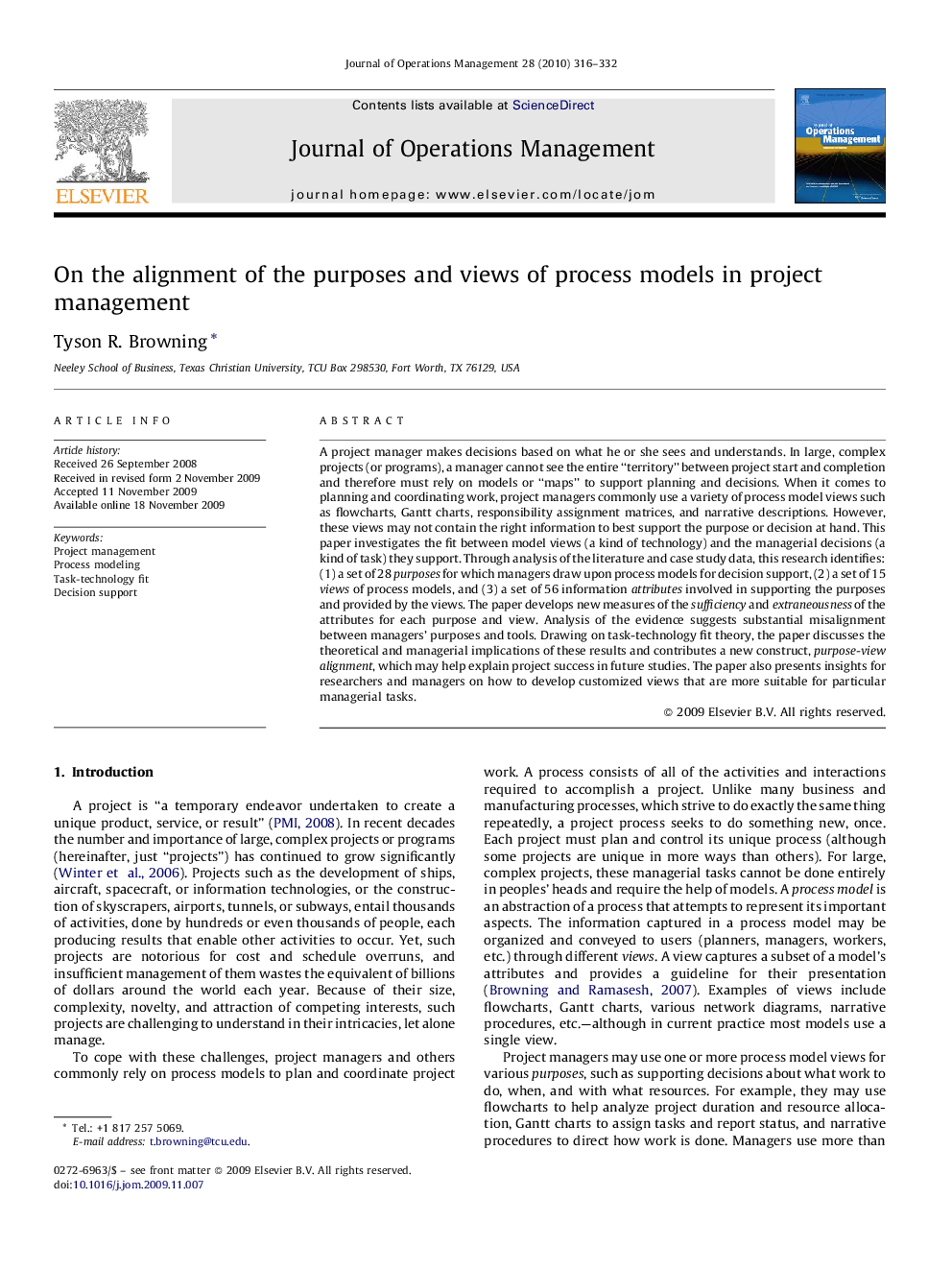| Article ID | Journal | Published Year | Pages | File Type |
|---|---|---|---|---|
| 1032067 | Journal of Operations Management | 2010 | 17 Pages |
A project manager makes decisions based on what he or she sees and understands. In large, complex projects (or programs), a manager cannot see the entire “territory” between project start and completion and therefore must rely on models or “maps” to support planning and decisions. When it comes to planning and coordinating work, project managers commonly use a variety of process model views such as flowcharts, Gantt charts, responsibility assignment matrices, and narrative descriptions. However, these views may not contain the right information to best support the purpose or decision at hand. This paper investigates the fit between model views (a kind of technology) and the managerial decisions (a kind of task) they support. Through analysis of the literature and case study data, this research identifies: (1) a set of 28 purposes for which managers draw upon process models for decision support, (2) a set of 15 views of process models, and (3) a set of 56 information attributes involved in supporting the purposes and provided by the views. The paper develops new measures of the sufficiency and extraneousness of the attributes for each purpose and view. Analysis of the evidence suggests substantial misalignment between managers’ purposes and tools. Drawing on task-technology fit theory, the paper discusses the theoretical and managerial implications of these results and contributes a new construct, purpose-view alignment, which may help explain project success in future studies. The paper also presents insights for researchers and managers on how to develop customized views that are more suitable for particular managerial tasks.
